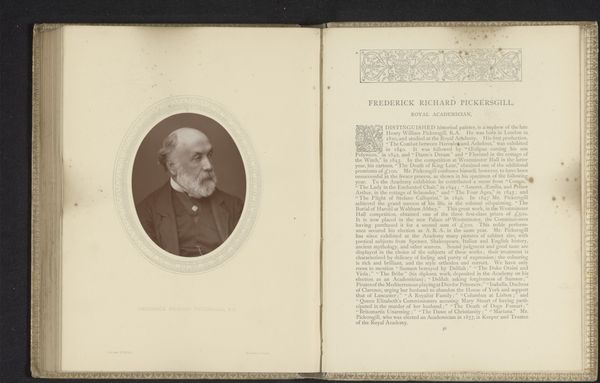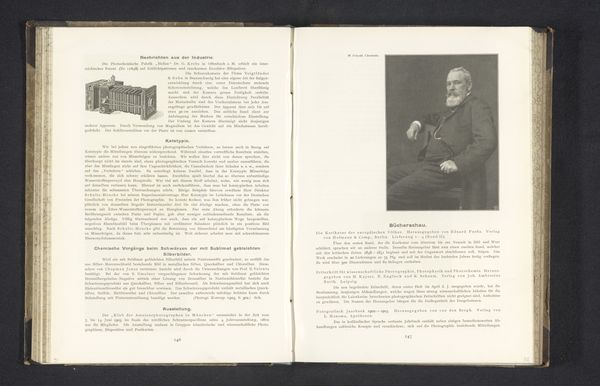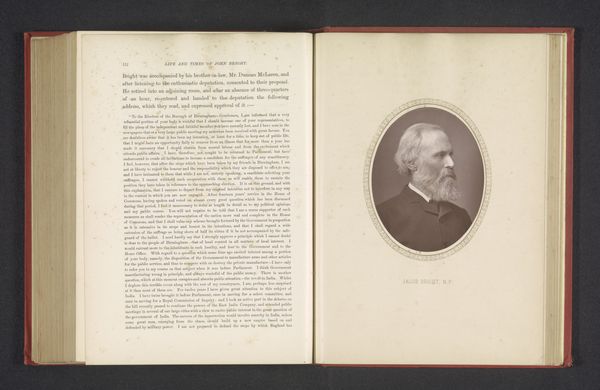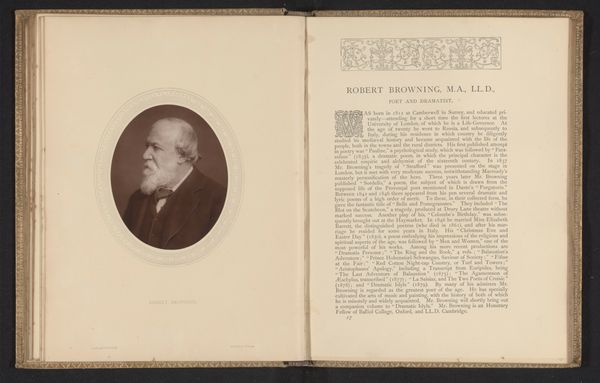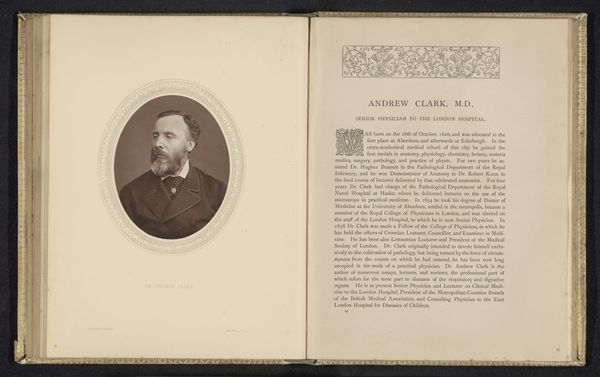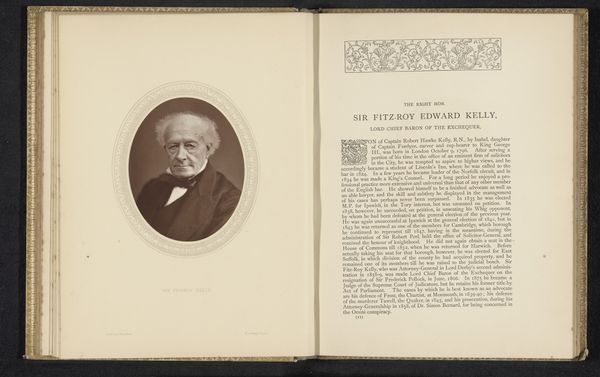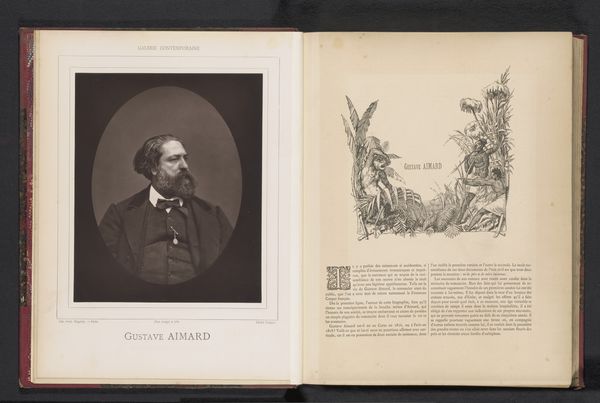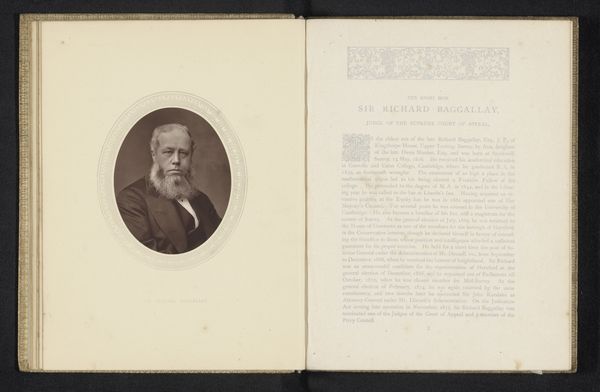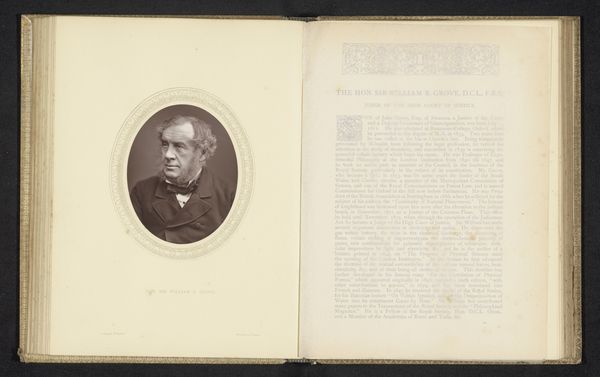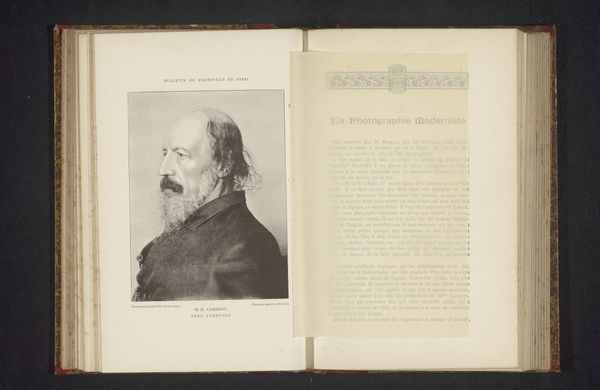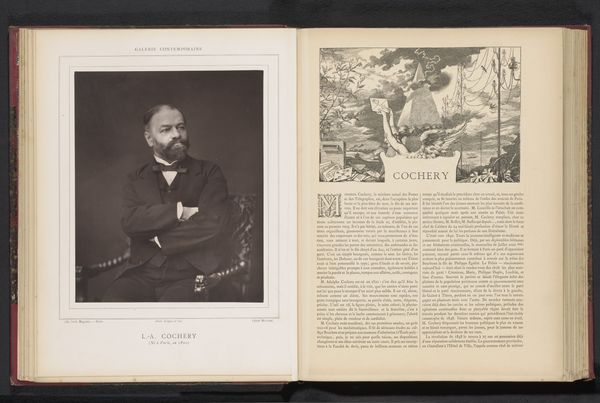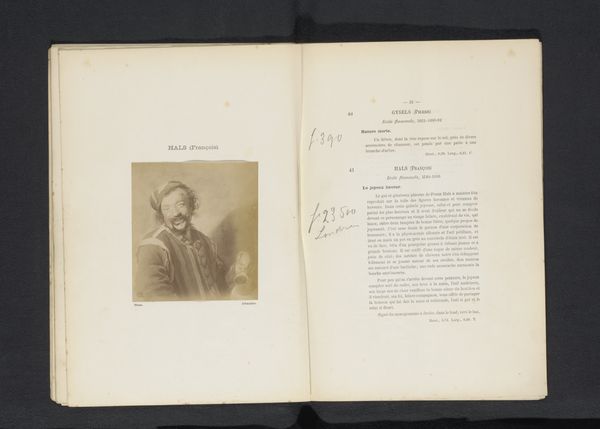
print, paper, photography
#
portrait
# print
#
paper
#
photography
#
realism
Dimensions: height 231 mm, width 186 mm
Copyright: Rijks Museum: Open Domain
Curator: Here we have Etienne Carjat's photographic portrait of Jules Verne, made before 1878, residing here at the Rijksmuseum. The image, a print on paper, gives us a glimpse into the famed author's likeness. Editor: My first impression is one of starkness, a study in monochrome tones. The oval format containing the portrait almost isolates Verne, making him appear very contained. Curator: Indeed. Consider though, this image’s positioning. This book page with accompanying illustrations contextualizes Verne not merely as an individual, but as a celebrated author already during his time. It signifies his immediate cultural impact. The illustration’s playful rendition speaks volumes. Editor: You are right; looking closely, one notices this elaborate adjacent image. And in pure compositional terms, there's an appealing duality here. The formal portrait plays against a fantastical, imaginative illustration, as if science meets art. I am curious about the graphic tension and implied dynamism the artist explored using layout. Curator: Beyond the layout’s clever design, observe the societal implications. Photography, by this point, had transformed portraiture democratizing representation and granting broader audiences access to visages of celebrated individuals like Verne, contributing to the evolution of celebrity culture and authorship. Editor: But this is where things become even more intriguing for me. Although in muted tones, his presence, particularly that wonderful full beard, projects authority and experience. This creates depth that no words can fully contain. The use of light in this photographic medium almost elevates the sitter to the level of historical figure, almost immediately. Curator: Absolutely. And by creating reproducible images of public figures, such as this work depicting Jules Verne, one starts to see their pervasive influence in the 19th century culture. We consider the implications of the image within this illustrated book. Its intended audience, and subsequent distribution would further speak to shifting social dynamics, highlighting literacy, class, and the development of modern mass media. Editor: Thank you. I see that the artwork contains several elements—graphic portrait and printed illustrations—to reveal many meanings. Now when I leave, I see Jules Verne a little differently—as a man, but also as an important cultural phenomenon. Curator: I think it has been interesting to examine this double page and situate its context to help reveal even more complex interpretations regarding image culture from that era.
Comments
No comments
Be the first to comment and join the conversation on the ultimate creative platform.
